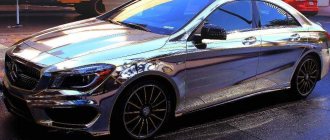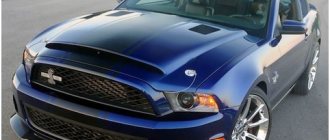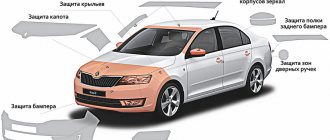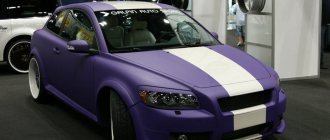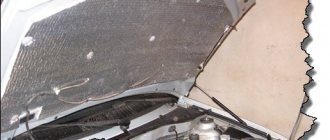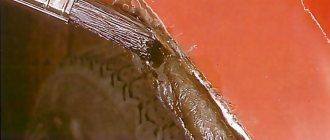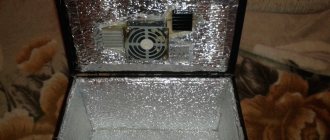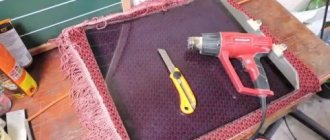We are currently operating in summer mode. Do not pay for your order until our manager confirms the possibility of its execution.
- we have been working since 2006 - we have won the respect of our customers, who write a lot about us in reviews on the Internet
- a large catalog of stickers - only we have unique sketches drawn by designers specifically for car stickers
- fast execution and dispatch of the order - stickers are produced within 24 hours (in rare cases, the deadline may be extended) and sent from the main post office. Average delivery time is 7 days
- We send stickers by cash on delivery - with a minimum partial prepayment, you pay the main amount of the order upon receipt of the parcel with stickers at your post office
- The latest equipment and sticker production technologies allow us to produce stickers according to the most complex sketches. We will reproduce any drawings found on the Internet or drawn by you, interesting photographs of your favorite pets or beautiful places into a car sticker
- only European materials for stickers - we use vinyl film only from trusted manufacturers who have positively proven themselves over the years of our work
- car stickers protect the paintwork of the car - they themselves are not damaged by precipitation or physical impact (including high-pressure washing)
- more than 60 film colors, 5-year manufacturer's warranty, all stickers are made to fit the dimensions of your car
Here are just some of our works.
Why car stickers?
Car stickers on German self-adhesive film are tens of times cheaper than airbrushing of the same size. For example, vinyl printing on a hood costs about 5,000 rubles, but for airbrushing you will have to pay a much larger amount.
We make custom car stickers, and you can transfer any high-quality image in digital format to the film - just find the picture on the Internet, download it and send it to us. The flight of fancy is not limited - there are billions of images on the Internet today, and almost any of them can decorate your car.
If you feel like an artist, you can draw a picture for a sticker yourself or take a photo and send it to us to make a sticker for your car. And then your car is guaranteed to be different from all others.
To place a sticker on a car, no special knowledge or skills are required. Just read the instructions “How to glue stickers on cars?” and watch video materials in the corresponding section of our website.
Rain, snow, heat and bad weather are not scary for stickers. If the sticker is glued correctly, then even multiple passes through the car wash will not harm the quality of the image. At the same time, removing the sticker will not be difficult. Using a regular household hair dryer makes removing the sticker much easier.
The stickers retain their color saturation for a long time and are guaranteed to stay on the car for at least five years.
But that's not all!
Stickers on cars
Do you want to stand out among the gray traffic? Do you want to decorate your car in a special way, but don’t see the point in spending money on airbrushing? Looking for an economical option? Then vinyl car stickers from the collection of the online store allstick.ru are ideal for you! Among the whole variety of stickers, you will definitely find one that is suitable for your car.
Design options
In our store you can buy car stickers of different styles. The choice depends solely on your imagination, as well as on where exactly you want to transfer the image.
- Glass (front, rear). The main preference is given to inscriptions. These can be the names and surnames of famous racers, slogans and tuning logos, names of any companies, hieroglyphs, Arabic script. After all, you can even order a sticker with your own nickname on the Internet.
- Hood and side body, including fenders. Fire or flames, Japanese characters, lightning, blots, stripes, animals and animal tattoos, mythical creatures, dragons, tribals, Celtic-style patterns, etc. Don't forget that you can buy car stickers and transfer them to the body in several layers to create a unique style.
- Bumpers, spoilers. Inscriptions are mainly used. Logos of motor oil and tire manufacturers may be used.
- Roof. Theoretically, all the stickers that are used for the hood can be used. In practice, stripes, flames, and lightning are more common.
Car stickers - pros and cons
Among the main advantages are durability, low price (several times lower than airbrushing), easy application (you can stick it yourself), and a wide selection. Our car sticker store offers you only high-quality vinyl film that will withstand both the summer heat and the harsh Russian winter.
An incomparable advantage is that vinyl stickers on cars can be easily removed from the surface of the body without leaving marks on the paintwork. Therefore, you can change your car vinyl at least every week. In addition, the law does not regulate the amount of vinyl - the traffic police officer will not be able to make any claims regarding the total number of stickers.
The most important advantage is that you can buy custom vinyl car stickers with any image in our store. The car body will be original, one of a kind.
Unique vinyl design for cars at a low cost? With allstick.ru it's real!
What types of films do we use for car stickers?
Film for car stickers can be different and we offer our customers all existing types of films:
- Simple car film, glossy and matte, in 60 color modifications.
- High-quality auto film, with high color stability and excellent water resistance in 70 color modifications.
- Transparent film (stained glass) for stickers on glass, as well as for obtaining intermediate tones by gluing films on top of each other. 30 basic color modifications.
- Reflective vinyl film reflects the light of headlights and shimmers colorfully in directional rays of light. 6 color modifications.
- Light accumulating film. In daylight it accumulates energy, and at night it glows in the dark. The three-layer film is presented in one color modification - yellow-green. The glow effect does not weaken over time and differs in duration and intensity
Why you need to order vinyl printing from us:
- We have our own printing and post-printing production
- We have our own designers on staff
- Our experts have more than 10 years of experience
- We guarantee our work for up to 2 years
- We use only reliable European or American materials (stickers last up to 10 years)
- The best multiservice in the city
- Comfortable waiting area with WiFi, TV, coffee and snacks
- Adequate and hospitable staff
Why car stickers and not airbrushing?
Traditionally, such images are created using airbrushing. But it has several serious drawbacks.
- The first of them is the high price. Airbrushing is a very expensive pleasure. And the better and more original the drawing, the more expensive it is.
- The second disadvantage is that the quality of the image depends on the skill of the performer. In addition, not every airbrush master is able to do drawings well with an arbitrary plot. Many of them just copy over and over again the standard pictures in which they have become skilled.
- Finally, if the car owner doesn’t like the picture made by airbrushing, he will have to repaint the car to apply a different image.
CAR STICKERS ARE THE BEST WAY TO GIVE YOUR CAR A BRIGHT INDIVIDUALITY
How to buy stickers for a car hood
Send us your finished layout. If you already have a design, layout, or a good quality picture, send it. We will show you what it will look like and put it into print. Then we'll paste it over.
Order a design layout. More often they order a design layout. To do this, it is enough to describe in words what you want or send a picture in any quality. The designer will build on this information. This is followed by approval of the layout, printing and pasting.
Labor warranty from 1 to 5 years. Depends on the quality and cost of the film.
So, what is vinylography? Essentially, vinylography is an analogue of airbrushing, but there is a fundamental point. Vinyl printing is printing on film, while airbrushing is done by spraying paint with an airbrush. If you look at modern work on airbrushing, in general you get the impression that most of the work is archaic. In fact, this is not surprising, because... all innovations, together with all fashion designers, have been in vinylography for a long time. Nowadays it’s not very relevant to do airbrushing, because there may be some interesting ideas, but the final implementation on cars, firstly, is usually not very aesthetic, and secondly, no one wants to pay a high price for a high-quality drawing, because . everyone already knows about car vinyl - everything is much more humane in terms of prices. As for vinylography - there is no problem in taking any image, for example, finding it on the Internet or ordering an illustration from any designer so that he displays what you want. The most important advantage of vinyl printing is the price, it is about three times cheaper than airbrushing, then the second plus is the time you spend getting the work done, because for example, airbrushing on two sides of a passenger car can take about two weeks, in While vinylography is done within a maximum of two days, as a rule it is even one day if we take full wrapping of two sides of the car. The third advantage of vinyl printing is that, compared to airbrushing, it can be easily dismantled. But you need to take into account such nuances that if the vinyl was printed on cheap film from Chinese manufacturers, after dismantling, an adhesive layer from the film itself may remain on the body - it can take a very long time to wipe off, so the universal recommendation is not to skimp on film, use, for example, KPMF. As for printing in vinylography - it is worth noting the possibility of printing on film with a resolution of 1440 dpi, that is, absolute identity of printing photographs. Of course, you can also do airbrushing, which will be as realistic as possible, for example, if we paint a photograph of a person on a car, but pay attention - when an artist shows you a picture that he will depict on your car, and what you end up with is not always the same thing Same. And all because not everyone wants to draw every detail, every little thing, otherwise it will affect the price and then the price will be so high that no one will need this airbrush. As for the resolution of the picture in vinyl printing: the picture on the side of a passenger car must have a height resolution of at least 2500 pixels and at the same time there should be no visible pixels at 100% scale, otherwise a high-quality print will not work. If we take the hood, then the height should already be 3000 pixels.
Vinylography technological process
Vinylography uses printing with or without white, what are the differences and what kind of printing is needed for. If we take a car of light colors, for example white, light gray, beige, then whitewash is not needed. The printing takes place on an eco-solvent wide-format printer on a transparent film, the image with a resolution of 1440 dpi, we laminate it and glue it, and if the car is dark in color, for example black, dark gray or any dark colors, it turns out that if we print with an eco-solvent printer on a transparent film, then where there was white color, there will be the color of the car. In other words, the drawing will simply be lost; to prevent this from happening, UV white printing is used. Ultraviolet white makes printing more expensive, but it allows you to convey 100% of the halftones of the original picture on the dark colors of the car, because where there was white, there will be not the color of the car, but a white print. Some people print vinylography on white film on the hood (as an example) of a dark car. If the car is not completely covered with vinyl, then this is incorrect. Someone thinks that if in the layout they make a smooth transition on the edges of the hood from the image to the color of the car, then this color will be 100% similar to the color of the car, this is a deep misconception, the color on the film along the edges of the hood will never completely match the color of the rest car body parts, because even if you select a CMYK color more or less similar to the color of your car, do a printing test, in any case you will not achieve a 100% shade of the car’s paint, because paint and printing are the fruits of different technologies. There is only one conclusion: if we do not completely cover the car with vinyl, then in order to make it high quality, vinyl must be printed only on transparent film.
What films are used for vinyl printing?
The best film for vinyl printing is 3M, but there is a question of price-quality ratio. 3M is the film with the longest resource, but in fact, few people want to pay a lot of money for the film of this company, so vinylography is printed en masse on KPMF 50000 film, or in other words, KPMF 5 series. This film can be printed on, and it can also be laminated with this film. Some unscrupulous people who are engaged in vinyl printing do the following: they print on KPMF and laminate with a cheaper film - Orajet 3640. This cannot be done, because the films have different tensile properties, this can radically affect further operation - the film can fail “accordion”, that is, begin to puff up. If our task is to significantly reduce the vinyl printing budget and this is a fundamental point for the customer, then of course there are no other options but to use Orajet 3640 film. This film is cheap because it is used in advertising, for example, for pasting shop windows, but It so happened that in Russia it is used both for advertising purposes and in vinyl printing. You can cover the hood with this film, but the lifespan will be unknown; it could be six months or a year. The film may peel off at the edges. If we take Orajet 3640 and cover, for example, car doors, then where there is a recess for the car handle, this place will come off 90% in 3-4 months, because it usually has a significant depth and the film does not stay there for a long time. If you want something cheap and cheerful, take Orajet 3640, but then don’t be surprised that everything comes off. The best option is printing and lamination with KPMF 5 series film.
What else should be said about vinylography?
Images for vinyl printing can be divided into individual graphic illustrations and pictures taken from the Internet. There are many photographs and images on the Internet; if you are looking for something specific for your car, for example, an image of an animal, then you can find something in any search engine, be it Google or Yandex. If you don’t like searching, there are various image banks where you can buy any illustration or photograph, there’s always plenty to choose from.
The dimensions of vinyl printing directly depend on the size of the car. It is advisable for the person who makes the model to measure the car, because otherwise everything will not turn out as planned in advance. When making a model, do not forget that you need to make reserves of approximately 10 cm on each side. Why is this necessary - because the film is flat, but the car is not flat, it has many recesses, protrusions, and all this can affect the final result. If, for example, we measure a hood, then we measure without a margin, but we make the model with a margin of 10 cm on each side. It is usually more convenient to measure the sides of the car from the edge of the headlights to the edge of the rear headlights, measure the bottom of the car along the threshold, measure the height of the doors, measure the distance between the door handles, and measure the overall height. There is nothing complicated about measuring a roof. Bumpers are measured by length and maximum height.
If vinyl printing requires combining a pattern (a classic example is camouflage), then you need to look at the specific car where to make the joints on this vinyl printing, use a test print. Let's say you are wrapping a car and have calculated that, for example, you have made two sides, but you need to combine the pattern with the front bumper and the hood at the same time. It is unlikely that you will immediately be able to make such an ideal layout without a test print and get it right centimeter by centimeter. To do this, you can do a test print, you print a tentative piece on a cheap film without lamination, for example for a bumper, and during the test pasting you look at where and how you need to change the pattern, the same with the hood, but I’m talking specifically about those options if we We want to achieve perfect quality. It is also possible to consider options to make joints not where the bumper ends, but where the bumper begins to turn towards the fender.
There are different options for creating layouts for a complete car wrap; some people do a full wrap on a car, i.e. so that all planes are aligned into one. But this is also not always applicable, because in some cases it will not make it possible to join the drawing if necessary. As for the technology for wrapping vinyl graphics, specifically as an application technique, here we use everything from a regular car wrap: dismantling door handles, moldings, nameplates, in general, everything that interferes with the wrap itself, surface preparation using polishing clay, degreaser, etc. We must not forget the subtleties of working with transparent film - all the dirt underneath is visible. No dust is allowed. As for the primer, you can use it as desired. It adds a layer of adhesive to your body film in areas where it is likely to come off.
The key point in making vinylography is an experienced designer who can competently make a layout; it is not enough to find a good picture, the main thing is to place it successfully on the car. You need to start vinylography from the sides, because... in this case, we get a globally new image of the car, and if we limit ourselves to only the hood, then it turns out that you have an image on one separate part, and not on the entire car - this will only spoil the overall aesthetics of the car. After the sides, if desired, you can continue the uniform theme of vinylography on the hood, trunk, roof, two bumpers, then everything will look rational. The conclusion from all this is the following: there must be a predetermined concept for the new image of the car.


